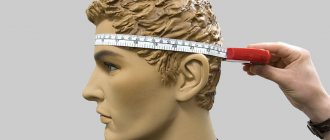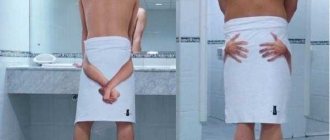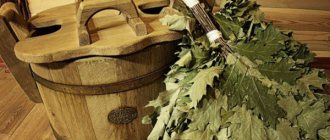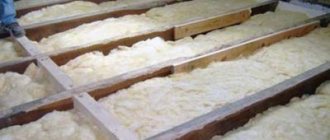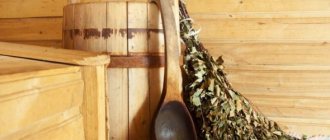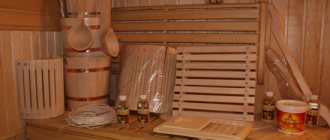Thanks to a felt hat, a sensitive person can visit baths and saunas without harm to their health. This material perfectly protects the head from overheating. Few people know that felt bath hats need to be washed in the same way as towels, bathrobes and other bath accessories. There are a few simple rules for caring for this accessory.
Is it possible to wash felt like washing bath caps?
Thanks to a felt hat, a sensitive person can visit baths and saunas without harm to their health. This material perfectly protects the head from overheating. Few people know that felt bath hats need to be washed in the same way as towels, bathrobes and other bath accessories. There are a few simple rules for caring for this accessory.
Requirements for headgear
It is difficult to imagine carrying out steaming or bathing procedures without a bath cap. But before you make a future purchase, you need to study the basic requirements for a headdress:
- Protection. It reliably protects the head from overheating and burns, prevents hair from becoming brittle and the development of pathogenic bacteria on the skin.
- Safety. The product helps preserve human health through the use of natural materials for its sewing.
- Convenience and practicality. A high-quality product reliably retains its shape, does not change color or volume after washing, and dries quickly. It should also provide comfort and ease of use and fully correspond to the circumference of the head.
- Attractive appearance. The headdress can have a classic or original design, but in any case it should provide aesthetic pleasure when worn.
When choosing a bath cap, it is recommended to take into account the shape, size and material from which it is made.
Is felt washable?
Felt is a material made from sheep's wool, it is harsh and dense. In such a hat, your head in the bath will be protected from overheating and heat stroke, even at high temperatures. Other types of bath caps are made from felt, natural cotton and linen.
The method of caring for a hat depends on the material from which it is made. Woolen products are washed according to all the rules recommended for this type of fabric. Hand washing is preferable, machine washing is strictly on the “Wool” cycle.
Hats made of softer felt, another type of wool, also require delicate or special washing modes. Natural woolen fabrics do not tolerate hot water, intensive spinning and long periods of exposure to water, so be careful.
The need to use a hat
Why do you need a bath cap?
It provides effective protection of the scalp from exposure to high temperatures (from 70 to 120 degrees), and hair follicles from destruction. Providing a “thermos effect”, the headdress helps maintain an optimal temperature on the scalp, which does not depend on the heating temperature of the surrounding air.
To ensure maximum protection, it is not recommended to visit the steam room with a wet hat, which can cause the opposite effect.
How to wash a bath cap
To prevent wool from shrinking, wash it in water no higher than 40 degrees. High temperatures and aggressive washing lead to the fact that bath accessories become cramped. This is not only inconvenient, but also dangerous: there should be a small air space between the scalp and the hat. Only in this case will the bathhouse be comfortable and safe.
We wash, wring out and dry the felt bath hat correctly:
- Select only the “Wool” mode. Other machine functions may cause deformation of the product.
- Use delicate soap, shampoo or gentle washing gel. Granular detergents with aggressive components should not be used.
- For hand washing, thoroughly stir the detergent into the water.
- Remove the spin. A small felt hat can be easily squeezed out by hand. At the same time, you cannot twist it, just press it with your palms and spread it on absorbent material.
- Do not soak wool for a long time.
- Dry naturally. To keep the hat in shape, put it on your head, then take it off and leave it on a flat horizontal surface. The drying rack and clothespins will leave unsightly creases.
Avid sauna visitors sometimes treat themselves to purchasing a decorative felt hat with appliqués, embroidery and other decorations. In this case, Miss Clean magazine advises that you trust the bath accessory only by hand washing.
Advice: How often should I wash felt? If you traditionally visit the bathhouse once a week, then after two or three procedures, put the hat in the machine or basin.
Hard felt hats do not need ironing - they retain their shape well. But if the iron has a function for ironing wool, then you can use it to disinfect and restore the pleasant appearance of the product.
Wash felt hats the same way you wash woolen items, and everything will be fine.
Source
Features of the material for sewing hats
Many people wear a hat to the bathhouse just for fun, because a person usually looks funny in it. But in reality, a hat is necessary. The steam room has extreme conditions (high temperature and humidity), and the closer to the ceiling, the more aggressive the environment. Staying in a steam room for a long time can lead to overheating, and a person may experience headaches, nausea, or even heatstroke. To avoid overheating and protect your head from high temperatures, bath caps are exactly what you need.
In addition, exposure to high temperatures has a detrimental effect on the condition of the hair. They become overdried, brittle and begin to split. A bath cap will help protect them.
The material for sewing is no less important than the shape, size and functionality of the hats. It is worth giving preference to natural materials that quickly absorb moisture and do not overheat the head.
The best option is animal hair, which absorbs moisture well, provides effective thermal insulation, and maintains a constant temperature on the scalp.
A high-quality bath cap can be made from the following natural and safe materials.
Felt
Dense non-woven material (thread thickness 3–4 mm), which is made exclusively by hand from sheep wool fibers by felting. The thickness of the finished material, taking into account the functional purpose, may be different.
Despite the density of the material, ready-made felted bath hats have a fairly porous structure with high air permeability. The product is voluminous and light. Thicker walls of the cap provide reliable protection from thermal effects.
This is a more advanced version of felt material. It is made from the wool of mountain goats, merino and rabbits. Felt is made by felting, but it turns out thinner and does not have a pronounced smell of wool.
Felt headwear turns out to be quite voluminous, soft and delicate to the touch.
A material of plant origin, which is used much less frequently for sewing headwear, but is no less in demand. Due to the high content of phenols in the structure of flax, finished products have a positive effect on the scalp, destroying microorganisms and fungi.
Linen hats prevent brittleness, dryness and split ends.
Cotton
A natural material that is quite environmentally friendly, hygroscopic and hypoallergenic. It promotes rapid absorption and evaporation of excess moisture from the surface of the head. This is the best herbal substitute for natural wool, which is suitable for allergy sufferers and people with hypersensitive skin.
The gold standard for hat care
Every 2-3 visits to the bathhouse, wash the cap by hand. The water should be moderately warm, but not hot - no more than 40°C. This applies to linen, cotton, and felt.
After washing, the hat is wrung out, but not twisted. Fabrics for bath accessories take any shape well when soaked in water. After a rough squeeze, the hat will stretch and wrinkle, and this, again, is inconvenient and ugly. The more carefully you wring it out, the longer the fabric will retain its structure and the better it will protect you from overheating.
How to care for felted bathhouse caps.
I often receive questions about how to care for a bath cap so that it serves you for a long time, maintaining its size and shape, and gives you a joyful and playful mood? Therefore, I decided to create step-by-step instructions and describe how I do it.
- So, you received the package with a hat, unpacked it. Shake the cap well. You can straighten the individual elements with your fingers. Felted products retain their shape perfectly - they can be crumpled, folded, put in a bag, and then taken out, and the felt will “remember” the shape specified by the master. If possible, place the cap on a horizontal surface for 1 night. Let her “rest” from the long journey.
- Questions often arise about how a hat will behave in a bathhouse - after all, it is humid and hot there. Some buyers are afraid that the cap may shrink. I roll my products very hard and they don’t shrink. But when wet, felt acquires a certain plasticity and can change its shape according to your desire. And the owner’s desire is to keep the product in the form in which it was purchased. While you are enjoying the steam in the steam room, you can be completely calm, because the hat is on your head, and it takes and maintains the shape of your head. Coming out of the steam room, you really want to dive into the pool or take a cool shower! Do not throw the cap away and do not leave it in the steam room to wait for your return - put it in a relatively dry place (put it down or put it on a bench). The same applies to the bath mat if you purchased one. Wool from some brands may stain when wet or wet (not all colors fade, but sometimes this happens), so after use, do not put a cap or bath mat with wet towels and a swimsuit in the same bag. Place them in different bags.
- “They brought him home, he turned out to be alive. “So you enjoyed the bathhouse, became healthier, rejuvenated, received a charge of vigor and good mood, and returned home. And the hat came with you this way, folded in a bag, in a bag. And here we return to the moment of purchase: take out the cap and shake it. Even if you handled it very carefully in the bathhouse, the cap is still a little wet (after all, you put it on wet hair too), so put it on your head, straighten the decorative elements, fields, petals with your hands and place it on a horizontal surface on overnight or for a day - until completely dry. After this, the dry cap can be put in a bag and put away until your next visit to the bathhouse. Do not dry felted items near heating appliances.
- If there is a need to wash a hat, this is possible. I do not recommend washing by hand; it is better to use a washing machine. Place the hat in the machine, possibly together with the rug (if you also purchased one), and do not place any other woolen items. Add wool detergent and fabric softener as desired. Set the machine to a program for washing wool and silk, temperature 30 degrees, spin no more than 400 revolutions (with more revolutions, the product may decrease in size). Do not turn off the spin, otherwise you will have to wring out the product yourself, but you cannot twist it. The machine itself will do everything as it should if you have set the correct mode. After you take it out of the machine, we return to step 3 - put the hat on your head. If you don’t want to wear a wet hat, you can first put a plastic bag on your head and a hat on top. Spread the decorative elements, fields, leaves, petals with your hands and place it on a horizontal surface for a day until it dries completely. A wet bath mat can be ironed with steam on both sides, and then placed on a horizontal surface until it dries completely.
The third main mistake after visiting the bathhouse
The bath hat should dry in the position in which it is worn. If you just hang it on the dryer, it will be an ugly flat rag. If you put it on a hot radiator, it will also shrink.
The easiest way to shape a wet hat is to put it on your head immediately after washing. Naturally, you don’t need to dry it on yourself - just straighten it out. The hat in the shape of a cap or bell can then be removed and placed to dry on any flat surface.
If you want the hat to take its exact shape and hold it for a long time, take an object that resembles a head. A vase or flower pot will do just fine. You can even inflate a balloon. Most often, hats with long brims or drooping ears are dried this way.
Straighten the hat on your head; if it does sit down, stretch it a little. Then put it on the “mannequin” and leave it until completely dry.
Source
Shape and size of bath headdress
A bath hat is a stylish accessory that differs in form and functionality. There are no special requirements for tailoring a headdress, the only condition is that it must reliably cover the scalp and eyes from hot steam. After all, it is through the back of the head that over 55% of the fluid from the human body evaporates.
A bath cap can effectively prevent overheating of the head and all the unpleasant consequences associated with it - headaches, nausea and fainting.
The most popular and popular forms of bath hats:
Fans of non-standard solutions can purchase products made according to original designs in the shape of a cap, Russian kokoshnik, cowboy, Viking and pirate hat.
Size
Hats made from natural materials are subject to slight shrinkage, so it is especially important to choose the right hat based on your head circumference.
To prevent the sauna hat from shrinking in size, it is recommended to follow the basic rules for storing it:
- After the procedures, the product should be steamed in heated water and pulled onto a 3-liter jar.
- For ease of stretching and drying, it is recommended to use ready-made rolling sheets designed for felt products.
- The stretched cap is left on the base until the material dries completely.
- Dried clothing is stored in a clean and ventilated place.
How to wash felt items: in the washing machine and by hand
Humanity learned to make felt between the 5th and 6th centuries BC. Around this time, sheep were domesticated, the wool from which it is made.
In the modern world, products made of dense, warm material are widely used. Felt, a type of felt, is used to sew outerwear, accessories and bags. Caring for them requires compliance with certain rules. Cleaning, drying and storage of the material must be appropriate to its characteristics.
Characteristics and varieties
When considering the properties of a material, you should not ignore the technology of its manufacture. Felt is called fabric rather arbitrarily, because it is not woven. The production technology consists of dry or wet felting.
This process is made possible by the scaly structure of sheep wool. The fibers are tightly woven together, creating a dense and fairly hard material.
Based on the thickness and type of raw material, felt is divided into several varieties:
Technical
This type of material is used in the manufacture of substrates for linoleum, thermal insulation work and various types of filters. The cheapest types of natural wool or synthetic fibers are used as raw materials.
Hats, classic coats, bags and even shoes are made from it. The basis for felt can be either sheep wool, rabbit or goat wool. Raw materials are taken only of the highest quality, which makes the finished products soft and easy to take the desired shape.
Needle-punched fabric
Its second name is furniture felt. It is a type of technical, but with a softer texture.
Shoe
Thick and dense material serves as the basis for stylish and warm felt boots and high boots. In addition to shoes, this type of felt is used in the manufacture of insoles.
Washing rules
Items made from felted wool can only be washed if absolutely necessary. If this is not available, you should limit yourself to dry cleaning. If the product is heavily soiled or has a general loss of presentable appearance, then washing is quite difficult to avoid.
The following rules will help you avoid damaging the material:
- the water temperature should be within the range of 30-40 degrees;
- rubbing or subjecting to intense mechanical stress is strictly prohibited;
- industrial bleaches are not applicable;
- detergents must match the type of material;
- Spinning and machine drying are prohibited;
Hand washing felt
These recommendations are aimed at preserving the original gloss and quality of felt products. Compliance with them will significantly extend the service life.
A little trick
Since acrylic is a completely synthetic thread, it is advisable to add an antistatic agent to the water during the last rinse. This way the clothes will not be electrified, which will make wearing more comfortable.
Also, to prevent pilling from appearing on knitwear, which very often happens with synthetic fabric, it is necessary to add a softening agent when washing.
Although caring for acrylic knitted products is quite simple, it is still necessary to strictly follow some recommendations. If you are not put off by the need to wash such items with certain restrictions and dry them only horizontally, feel free to buy yourself wearable, practical and beautiful clothes made from acrylic thread.
Dry cleaning
Traces of dust and minor dirt are removed without using large volumes of water. In this way you can clean felt boots, hats, coats or any other felt products that cannot be washed. To carry out dry cleaning, you will need a medium-hard brush and a damp cotton cloth.
The procedure itself is carried out in several stages:
- using a brush, the entire surface of the product is processed;
- stains are removed with wool stain remover or using a suitable method from scrap materials;
- You can refresh the felt after treatment with a well-wrung cotton napkin.
Soap foam will remove heavy dirt; it is applied locally and removed with a sponge after a few minutes.
Felt products are suitable for dry cleaning
An interesting way to clean using bread. Dry crusts are rubbed onto the dirty surface. The remaining bread and crumbs are swept away with a brush. Felt boots can be cleaned well in this way.
Dry cleaning
First of all, the degree and quality of contamination should be assessed. If they are insignificant and you just want to update the product, give it a fresh look, then dry cleaning (including with soapy water) may be quite sufficient. This operation is performed using a dry or wet bristle brush, sponge, napkin, rag. During this manual operation, the felt is cleaned very delicately, its structure is not affected, but at the same time surface dirt is well removed, the top layer is slightly fluffed, and thus the appearance and color of the product are refreshed.
Dry cleaning may also be required as a preliminary step before washing if the felt has severe local dirt or stains left, for example, by dripping oil, cosmetics, or soot from touching the parts of a wood-burning stove. In this case, you will have to use soaking with preliminary application of detergent to a specific area or use a stain remover for wool, and only then send the product for washing.
Recovery after shrinkage or stretching
Technically, once a hat has stretched or shrunk, it cannot be repaired. But you can loosen the fibers of the fabric, which will help return it to its original shape.
Some people wash their hats to make them shrink in hot water followed by vigorous wringing. The products become small, but at the same time they are damaged. Therefore, there is no need to exceed the recommended washing temperature.
Items made from acrylic, cotton, wool (including angora) or cashmere stretch or shrink better than items made from other materials. This is due to the “thinner” fiber mesh. To restore the original size, fill a basin with warm water, add a little shampoo or conditioner (about 1 tbsp per 1 liter), stir. Wet the item for half an hour. Rinse. Squeeze between towels. Place on a dry towel, shape, and leave to dry.
A good option for how to wash a white hat and at the same time return it to its original shape is to add vinegar to the water. Leave the headdress soaked for 30 minutes, rinse, and wring out between towels. Dry as above. A stronger vinegar solution is also recommended when washing items with head lice or after lice (a common problem for children when visiting children's groups).
Author's rating
Author of the article
Natalia
Large cleanings are fraught with unexpected finds.
Articles written
199
General washing rules
If it is obvious that you cannot do without washing, then there are two options: hand washing and machine washing. The general rule in both cases will be a strictly defined water temperature - in the range of 30-40 ° C. In colder water, the product simply will not wash, but if the upper threshold is exceeded, you risk ruining the product: the felt may become deformed and it will be difficult or even impossible to fix. In general, washing felt should be approached in a similar way to washing woolen products. Also avoid soaking the felt for a long time, this will not have the best effect on its condition. Finally, items with various embellishments, fine trimmings, embroidery, and appliqués should only be washed by hand.
How to clean a felt hat?
Clear yellowness on light felt
hats easily, using a solution with the addition of 2 teaspoons of ammonia and 4 tablespoons of hydrogen peroxide per 1 liter of water. You should soak a clothes brush in the mixture and gently brush the item, being careful not to wet it too much.
Interesting materials:
How to set a timer on Starline? How to install Tatar language on iPhone? How to install a texture pack on Minecraft Pocket Edition? How to install textures for Minecraft? How to install textures on Minecraft 1.14 4? How to install textures on Minecraft Bedrock? How to install textures in Sai 2? How to install Telegram Linux? How to install telegram on Linux Mint? How to install telegram on Linux?
Detergents
As for detergents, products containing lanolin are suitable for felt. This can be lanolin soap (for hand washing), as well as a special gel or shampoo for delicate washing. All kinds of granular products containing aggressive components can irreparably damage felt.
Before hand washing, soap or other detergent must be thoroughly stirred. A felt item can be soaked in prepared water for a short time and then washed, avoiding strong friction and creasing. If necessary, you can use a brush with medium-hard natural bristles.
Machine wash felt only in the “Wool/Delicate Wash/Hand Wash” modes; anything else will lead to matting or deformation of the felt product. It is strictly unacceptable to use a machine spin, so this option should be immediately disabled when setting up modes.
Whitening
Felted wool does not withstand chemical bleaching well. It is extremely undesirable to use aggressive compounds, and especially chlorine, on it. But this does not mean that it will definitely not be possible to return whiteness.
ARTICLE FOR YOU
How to wash softshell items: in the washing machine and by hand
There are several effective remedies suitable for combating yellowness and gray tints:
- potato or corn starch;
- Wheat flour;
- crushed chalk;
- baking soda;
- semolina.
Starch is suitable for combating yellowness.
All of the listed products have absorbent functions. This allows them to be used on a dry surface. To achieve the result, they are simply applied to felt and left for several hours. After a while, the residues are brushed out or vacuumed.
Spin and dry
You can only wring out the felt with your hands. The wet item should be placed on a fabric folded in several layers that absorbs moisture well (for example, a terry or waffle towel), and squeezed out with your hands using simple pressing movements, without applying much force. Felt cannot be twisted, folded or folded.
Before drying, flat items such as a rug or a sunbed can be stretched a little with your hands and left in that position on a flat surface.
It is also advisable to straighten bulky items, in which case they will better retain their shape. The slippers can be put directly on the foot and carefully, so as not to wrinkle, removed from the foot and set to dry. The same method applies to the mitten. To straighten the hat, the best option would be to use a barber's blank, but since not everyone has such a thing at home, the blank can be replaced with an ordinary three-liter glass jar. Drying felt items on a rope or wire rack is extremely undesirable, since marks from clothespins and racks usually remain on the felt, and small deformations and dents appear. Drying is carried out under natural conditions; there is no need to create additional airflow and heating.
Bath hat: why you can’t do without it and which one to choose
Professional bath attendants never tire of reminding people of the need to use hats during health procedures. This fact raises a number of questions among ordinary people.
Read in the article
Functions
The hat is strongly associated with the function of protection from the cold. It doesn't seem logical to wear it in a hot place. Ancestors did not use any hats in the bathhouse. In extreme cases, you can cover your hair with a towel. These are just some of the arguments that clients give in an attempt to abandon the attribute.
Ironing
Typically, felt products do not require ironing, but in some cases, if, for example, it is thin felt or felt that does not have sufficient rigidity to keep its shape well, ironing may be necessary. But here, as with washing, it is important to observe the temperature regime. The most optimal mode will be for ironing wool; as a rule, it is present on all modern irons. Sometimes ironing felt bath accessories is also useful for disinfecting them.
The iron can also come in handy in one more case - if there are creases in the felt. Then it can be steamed in a wet state with an iron, also in the “Wool” mode. This method easily removes wrinkles and creases.
Feel like a Red Guard or a Viking in the bathhouse
The traditional shape of a bathhouse hat, worn by both women and men, is a bell. Externally, women's models differ from men's bath caps only in decor. For example, on bell hats intended for women, two braided cords with bows at the ends that imitate braids can be sewn on top.
For men, bell hats are often decorated with the emblems of football clubs or funny embroidered inscriptions. There are also bell-shaped hats that are equally suitable for everyone, regardless of gender. Such models can be very funny, bringing smiles to all people in the bathhouse.
Nowadays, the choice of bath hats is unusually huge. Among the most common forms of hats you can find the following options:
- budenovka;
- earflaps;
- pirate cocked hats;
- cylinders;
- Panama hats;
- caps;
- character hats;
- helmets of medieval warriors;
- Viking helmets;
- cowboy hats.
Bathhouse hats in the shape of a budenovka are a very popular option, taking people back to Soviet childhood, when almost every child had such a headdress. True, they flaunted them on the street, and did not visit the bathhouse. This hat model reliably covers your ears and neck from the heat.
Similarly, a hat in the shape of an earflap completely covers your head from high temperatures in the bathhouse. These models may vary slightly. For example, if an imitation of flying glasses is sewn on the front, then such a hat will resemble the headdress of 20th century pilots.
Themed bathhouse hats look funny and don’t even need any additional humorous decor to lift the mood in the steam room. First of all, visiting the steam room is associated with a pleasant pastime and friendly gatherings in the bathhouse. Therefore, it is not surprising that recently the market has quickly become filled with various fancy variations of bath caps.
Curly bathhouse hats are funny, felted in the shape of some cartoon characters or animals. These bath accessories look extremely extravagant. But their cost is quite high, because you have to pay well for exclusivity. Such products are popular as original gifts.
